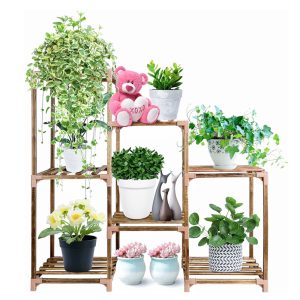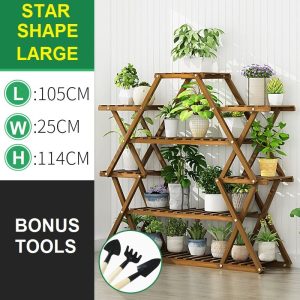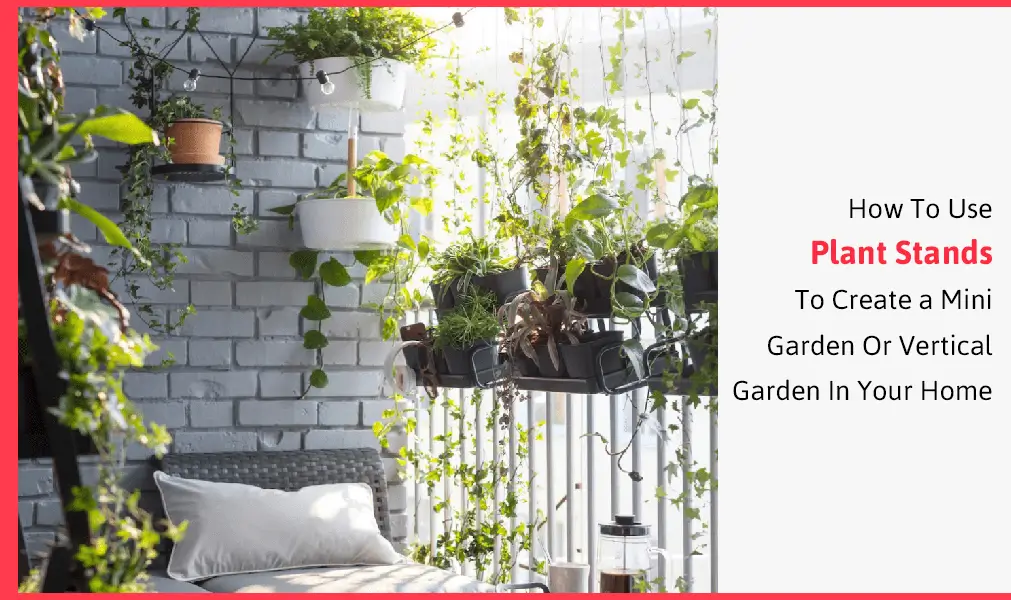Cart review

How To Use A Cultivator To Prepare Soil For Farming?
What Is A Cultivator?
The purpose of secondary tillage with a Garden Cultivator is to improve the soil's fertility and, thus, the quality of the harvest. It's made up of frames outfitted with teeth-like devices that dig into the soil and extract the nutrients hiding deep below. For those still scratching your heads, let me explain what a soil profile is and why it is so important in agriculture. So, we'll be covering the basics of soil profiles down below.The Different Types And Functions of Cultivators Used in Farming
Independent Disc Stubble Cultivators
 Stubble cultivators are distinguished by their V or X-shaped frames and by the variations in the size and form of their discs. Discs with diameters greater than 600 millimetres have replaced those with smaller diameters for more profound work and increased capacity for mixing residues.
The rolling hollows of a stubble disc cultivator do the bulk of the work in recompressing the soil and regulating the depth of the cultivation. To make a fake seed bed, use a small disc machine (460 mm). Models with larger discs (550 mm) allow for the incorporation of straws and the destruction of regeneration, albeit the latter is less effective depending on the disc diameter and angle.
Stubble cultivators are distinguished by their V or X-shaped frames and by the variations in the size and form of their discs. Discs with diameters greater than 600 millimetres have replaced those with smaller diameters for more profound work and increased capacity for mixing residues.
The rolling hollows of a stubble disc cultivator do the bulk of the work in recompressing the soil and regulating the depth of the cultivation. To make a fake seed bed, use a small disc machine (460 mm). Models with larger discs (550 mm) allow for the incorporation of straws and the destruction of regeneration, albeit the latter is less effective depending on the disc diameter and angle.
Disc Harrows
 Disc Harrows, often known as the cover crop, have disc gangs that allow the angle of attack to be adjusted. The mainstay of Disco Harrow's product line is x-frame variants with 660 mm discs and a 230 mm gap.
The axle's location affects whether or not the device requires a roller. Using the disc sprayer for routine, shallow tasks are complex.
Disc Harrows, often known as the cover crop, have disc gangs that allow the angle of attack to be adjusted. The mainstay of Disco Harrow's product line is x-frame variants with 660 mm discs and a 230 mm gap.
The axle's location affects whether or not the device requires a roller. Using the disc sprayer for routine, shallow tasks are complex.
Two Row Cultivator
 The simplicity, mild traction requirements, and depth adjustment options of the Lemken Smaragd, a two-row tine Cheap Cultivator with leveling discs that became a 90s icon, all contributed to the machine's widespread acclaim.
Wide wing shares are necessary for uniform work over the breadth, especially while destroying weeds, because of the relatively high spacing between the tines. It can do deep-plowing and provide a level surface, but there are better choices for laying down a false seedbed or spreading straw on the ground.
The simplicity, mild traction requirements, and depth adjustment options of the Lemken Smaragd, a two-row tine Cheap Cultivator with leveling discs that became a 90s icon, all contributed to the machine's widespread acclaim.
Wide wing shares are necessary for uniform work over the breadth, especially while destroying weeds, because of the relatively high spacing between the tines. It can do deep-plowing and provide a level surface, but there are better choices for laying down a false seedbed or spreading straw on the ground.
Three / Four Row Cultivators
Increases in the number of cultivators—from two to three or four rows—have allowed for less wear and more consistent results across the width, mainly when working with many residues. The implement's tines enhance the soil-straw ratio. Like their two-row counterparts, these implements give farmers a considerable range of depth. For wide frames, semi-mounted designs are preferable because of their longer overhang and higher power needs. Sometimes, a roller isn't necessary for a gadget to function.Harrows
Only while travelling at high speeds are the spring tines of the helpful harrow. The effect on the leftovers will be excellent with dry conditions and particularly ripe straw. Since it just scratches the surface, the harrow needs multiple passes to create a questionable-quality seed bed. Simplified sowing advocates also recognise the usefulness of these Garden Tools because of its ability to reduce pest populations. Some harrows can be fitted with discs or cutter rollers upstream of the teeth to reduce the number of passes needed and make it easier to intervene when dealing with vast volumes of residue.Stubble Cultivators
 This Gardening Gear is excellent for fake sowing because of the spades' ability to rotate freely, tearing off and projecting the dirt on the surface. However, the spades guarantee a haphazard depth of work, which is problematic for clearing away regrowth.
Creeping weeds, which wind themselves around spade trains, can be a problem for this instrument. Some people have proposed replacing spade trains with disc trains as a solution.
This Gardening Gear is excellent for fake sowing because of the spades' ability to rotate freely, tearing off and projecting the dirt on the surface. However, the spades guarantee a haphazard depth of work, which is problematic for clearing away regrowth.
Creeping weeds, which wind themselves around spade trains, can be a problem for this instrument. Some people have proposed replacing spade trains with disc trains as a solution.
What Is The Soil Profile?
Under specific conditions, the soil is formed by an interplay of physical, chemical, and biological processes. Microorganisms, insects, minerals, decomposing organic matter, humus, water, air, and so on are all examples of what contributes to the soil's fertility and nutritional density. Sandy, clay, and loamy soil are the three most common varieties. Below are some of the qualities that make for perfect soil;- Water-retentive
- Aerated, consistent (texture-appropriate)
- Acid- and alkaline-neutral
- Nutrient-dense (micro and macronutrients)
What Extent Does Soil Consist Of Its Various Components?
 Soil contains many different kinds of material, both living and nonliving. However, minerals account for 45% of the material, 20 % to 30% of air and water, and just 5% of organic stuff.
Soil contains many different kinds of material, both living and nonliving. However, minerals account for 45% of the material, 20 % to 30% of air and water, and just 5% of organic stuff.
Layers Profiles Of The Soil
The topsoil, the subsoil, and the bedrock are the three main soil layers.Topsoil
As its name implies, this is the most prominent and accessible part of the landscape. Hummus is a term for the top layer of soil, which is dark in colour because it contains organic content and decomposing debris. Additionally, this layer is accountable for retaining water and supplying adequate air for plant growth.Subsoil
After the hummus layer lies the subsoil, which is more mineralised than the humus layer but contains less organic material. This layer is lighter in tone than Topsoil and is composed of more compact material. Farmers use a cultivator to improve soil health by combining Topsoil and subsoil.Bedrock
The subsoil and topsoil sit on this layer of dirt. The bedrock is a transition layer between the two layers and provides stability for them. The bedrock structure, the toughest of all the strata, consists mainly of rocks.Cultivator-Soil Profile Relationship
Research has shown that using cultivators to improve soil fertility is an integral part of farming. Understanding the structure and function of the soil profile is crucial because various layers contain different nutrients. Therefore, we must adjust the soil to meet the requirements of multiple crops. But there are a lot of cultivator machines out there, and we need to choose the best Cultivator for our needs. While we have described a Cultivator's inner workings and vitality, many of us are wondering how to put one to use in the field. But have no fear, for we shall teach you the methods utilised by the common grower.How A Cultivator Works?
 As the working circumstances, working width, and working depth vary from one Cultivator to the next, so does the HP range required for its operation. There is a common misunderstanding that tillers and Cultivators are interchangeable, but there are important distinctions between them. While a tiller and a cultivator serve the same role in agriculture, tillers are self-propelled, while cultivators are pulled behind tractors. Because of this attribute, they are distinct from one another.
As the working circumstances, working width, and working depth vary from one Cultivator to the next, so does the HP range required for its operation. There is a common misunderstanding that tillers and Cultivators are interchangeable, but there are important distinctions between them. While a tiller and a cultivator serve the same role in agriculture, tillers are self-propelled, while cultivators are pulled behind tractors. Because of this attribute, they are distinct from one another.
Cultivators Help Loosen And Aerate The Soil, Which Increases Crop Yield
A cultivator's metal tines are mainly used for breaking up compacted soil. It also aids in the uniform distribution of fertiliser and other soil amendments across the entire soil surface. When working with these Gardening Equipments, it is advisable to do so over dry soil rather than damp dirt. You'll get the best results from the cultivator if you use it on dry ground.Eliminating Weeds
Buy Cultivator help farmers by getting rid of weeds and other plants that sprout alongside the crops. In gardening terminology, this is the time to pull any unwanted plants. Pesticides and other chemicals that help eliminate weeds for good are sometimes spread uniformly by farmers. In addition to being practical, safe, and able to get rid of most weeds with only one application, dependably, glyphosate is by far the most often used weed killer. Also, this aids farmers in using manual weeding methods by reducing the time and effort required to do the task.Combining compost with fertiliser and stirring it up
Using a cultivator, you can ensure that all organic compost and synthetic fertilisers are spread uniformly across the soil. Whenever fertilisers are applied manually, most of it is lost due to wind and rain. Fertilisation with these Cheap Gardening Tools has the added benefit of helping farmers not waste any fertiliser they use.Increased Efficiency
The cultivator from Wizpay Stores makes the soil more productive by ensuring the plants grow in a healthy environment. It secures the land's increased value and the farmers' increased profits. Just by improving the quality and health of crops through ploughing with a cultivator, a farmer's prospects improve dramatically.Cutting Down on Staffing
Back in the day, when farms relied on antiquated machinery and human labour, a lot of effort went into producing a relatively small harvest. Farmers today benefit from improved efficiency, higher yields, and higher prices, all made possible by technological advancements. This eliminates the need for as many people to work in the fields since modern, high-quality machinery like cultivators can get the job done with much less effort.What Part Do Farmers Play? The Role of Cultivators in Various Tasks
Cultivators from Latitude Pay Stores provide successful farming procedures, leading to crops being inexpensively harvested. In addition, a high-quality cultivator will aid in pulverising the soil, which helps bury dead crops and prevent the spread of weeds. Most farmers agree that cultivators are the most effective farm machines worldwide.Conclusion
A cultivator is an efficient piece of farm machinery that helps produce superior crops. In addition, it is helpful in all kinds of land improvement projects. For this reason, any astute farmer knows he needs to invest in a high-quality Cultivator for his land. In addition, as agricultural technology advances, farmers are adapting to maximise profit with dwindling resources. They are, therefore, assisted in their endeavours by Cultivators.Suggested Product
Professional Plant Stand Supplier Multi Tier Flower Rack for Indoor Outdoor
Original price was: $98.95.$85.95Current price is: $85.95.
Releated Posts
Product Added!
Product Removed
You must first login or create an account to add to a Wishlist
























